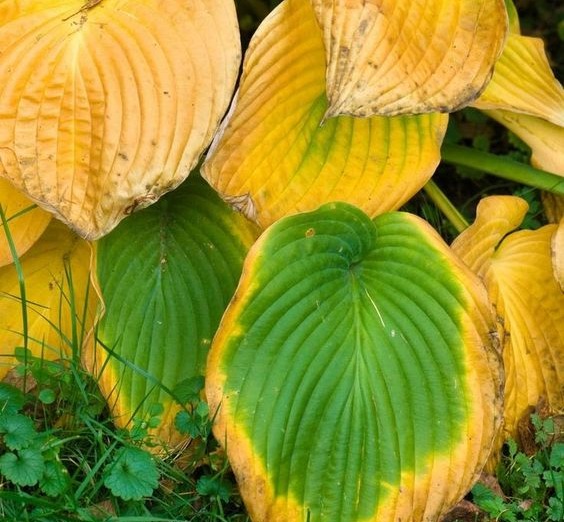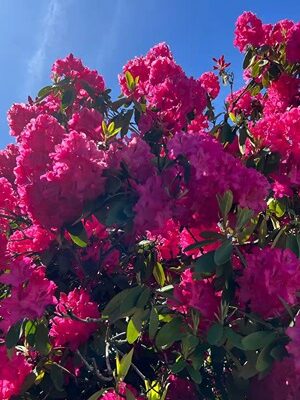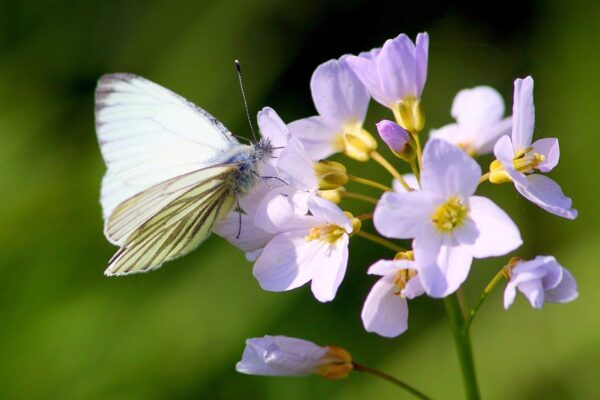How to Grow and Care Bidens: Simple Tips
Bidens are abundant bloomers, displaying daisy-like flowers in shades of yellow or orange. How to grow and care Bidens: More recent biden cultivars offer blossoms in pink, gold, and white hues. Commonly known as Spanish needles, tickseed sunflowers, and beggarticks, these plants flourish in fertile soil with proper drainage and thrive in sunny locations. How to grow and care Bidens: They exhibit good resilience to drought and high temperatures. In warmer regions, bidens are perennials, while in colder climates with freezing temperatures, they behave as annuals, necessitating replanting on an annual basis.
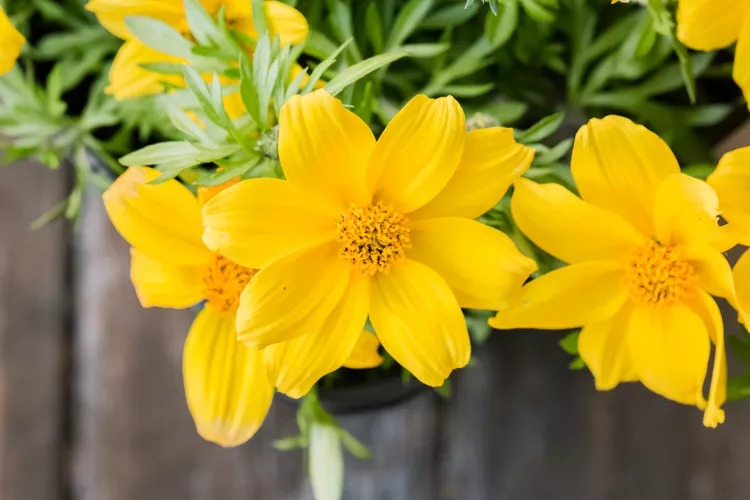
Common Name: Bidens, beggarticks, black-jack, burr marigolds, cobbler’s pegs, Spanish needles, stickseeds, tickseeds, and tickseed sunflowers
Botanical Name: Bidens spp.
Family Name: Asteraceae
Plant Type: Annual, perennial
Soil Type: Well-drained
Soil pH: Slightly acidic to neutral
Bloom Time: Summer
Flower Color: Yellow, gold, white, pink, orange
Hardiness Zones: 8-11
Native Area: North America, South America, Africa, Europe, Asia
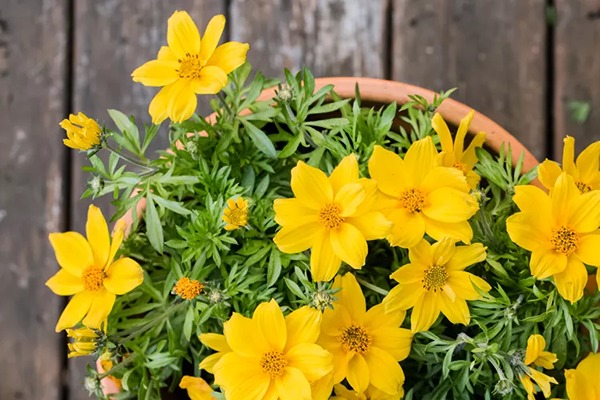
Bidens Care
Here are the main care requirements for growing bidens:
- Choose a well-draining soil rich in nutrients for planting.
- Bidens thrive in soil with a neutral to slightly acidic pH.
- Ensure that the plants receive ample sunlight.
- Bidens do not need deadheading to encourage new blooms.
- Feed the plants monthly using a general-purpose fertilizer.
Light
How to grow and care Bidens, For bidens to achieve their largest and most vibrant blooms, they thrive in full sun. It is important to select a planting location that receives a minimum of six hours of direct sunlight each day. Insufficient light may cause the plant to grow but could result in fewer blooms and a more elongated and less compact appearance.
Soil
Whether you decide to plant bidens in an outdoor garden or a container, it is crucial to provide them with soil that has excellent drainage to prevent potential issues like root rot. Furthermore, these prolific flowering plants flourish in nutrient-rich and organic soil. How to grow and care Bidens, While bidens can tolerate a range of soil pH levels, they typically perform best in soil that is neutral to slightly acidic in nature.
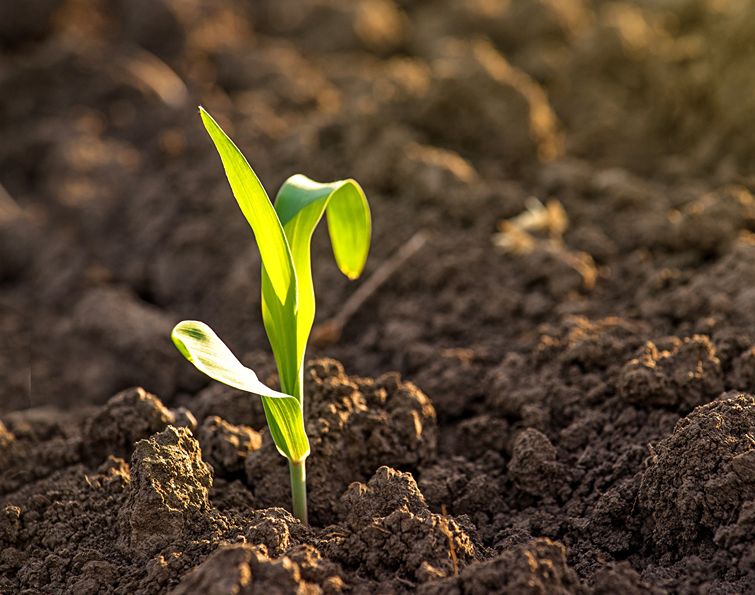
Water
Bidens are known for their moderate drought tolerance. Nevertheless, regular watering is necessary to ensure they maintain their optimal appearance and longevity. Generally, providing around an inch of water per week is adequate. It is advisable to water the plants before wilting becomes apparent.
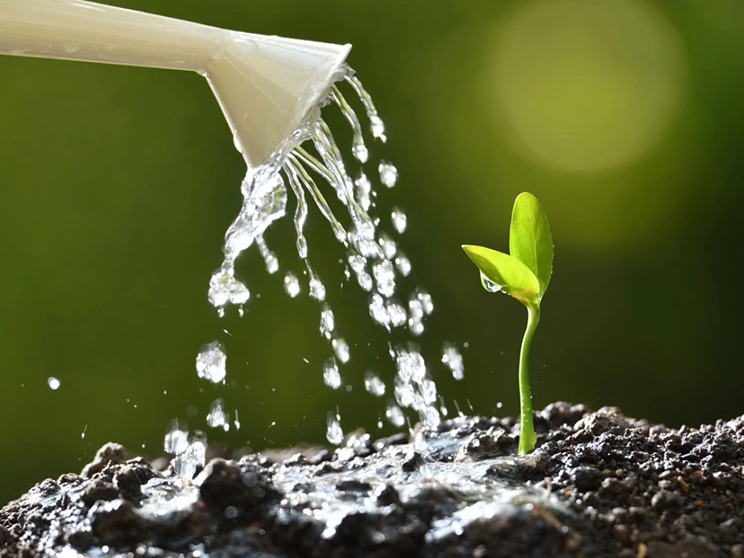
Climate and Moisture Levels
Bidens exhibits excellent resilience to high temperatures and drought. It is commonly found thriving in warm and humid regions such as Hawaii, Mexico, and Polynesia. Its ability to withstand dry conditions contributes to its adaptability in hot environments. However, during prolonged dry spells, it is advisable to provide regular watering to mitigate the potential impact of heat on the plant’s foliage and blossoms.
Conversely, bidens plants are susceptible to cold temperatures. They lack frost resistance and cannot survive when exposed to temperatures below 40 degrees Fahrenheit.
Fertilizer
For optimal growth, the abundantly blooming bidens plant thrives when nourished with soil rich in nutrients. The specific type of bidens plant you are growing typically dictates the appropriate amount and type of fertilizer to use.
In general, it is recommended to provide this plant with a monthly application of a general-purpose fertilizer or use a timed-release fertilizer during planting. This becomes particularly crucial when growing bidens in containers, as potted plants may require additional nutrients due to the drainage of nutrients from the soil.
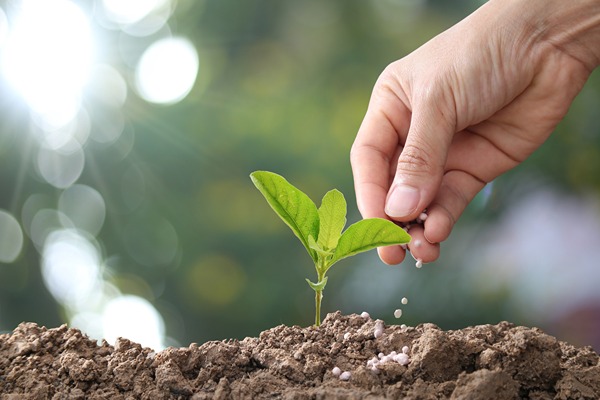
Types of Bidens
The Bidens plant boasts over 200 species, including native varieties found in Hawaii, Mexico, and Europe. Within the United States, Bidens can be found as native species in every state except Wyoming.
How to grow and care Bidens, When encountering wild bidens, you will notice their characteristic tiny seeds that possess a sticky nature, often clinging to clothing or becoming entangled in a dog’s fur. Fortunately, most bidens available in commercial markets have been specially cultivated to eliminate this sticky seed issue. Here are a few:
Bidens alba: This bidens plant variety, also known as beggarticks or Spanish needles, showcases white petals surrounding a vibrant yellow center, reminiscent of a daisy.

Bidens ‘Campfire Burst’: A striking variety of bidens, ‘Campfire Burst’ grabs attention with its vibrant flowers. The petals display a captivating blend of deep red, fiery orange, and lively yellow hues. These abundant bloomers add a splash of color to any landscape and continue flowering from summer through fall.
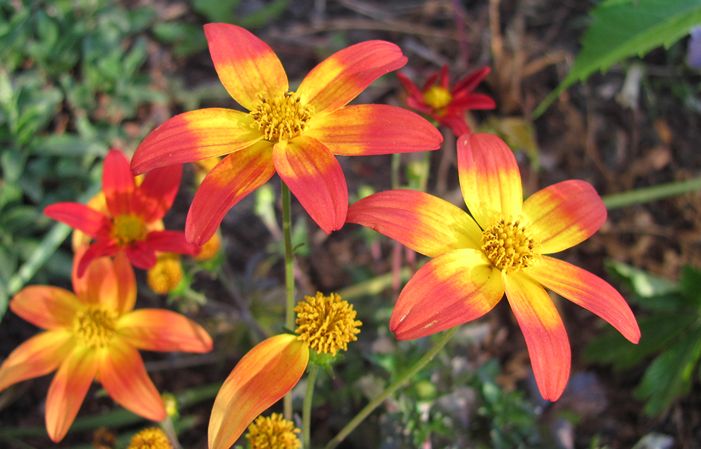
Bidens ferulifolia ‘Golden Nugget’: Originating from Mexico and alternatively known as Apache beggartick or fern-leaved beggartick, the ‘Golden Nugget’ bidens variety catches the eye with its star-shaped yellow petals and vibrant orange center. Its delicate and feathery foliage adds to its appeal.
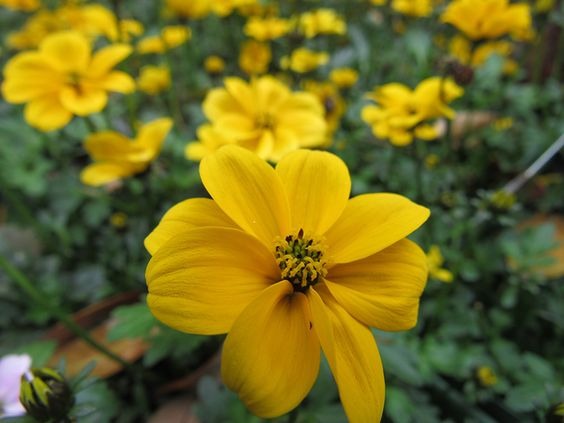
How to Prune
Bidens are low-maintenance plants that require minimal pruning or deadheading. However, if the plant becomes excessively large, it can be pruned during favorable growing conditions. Additionally, pinching or cutting back the plant can promote denser growth and stimulate the emergence of new blooms.
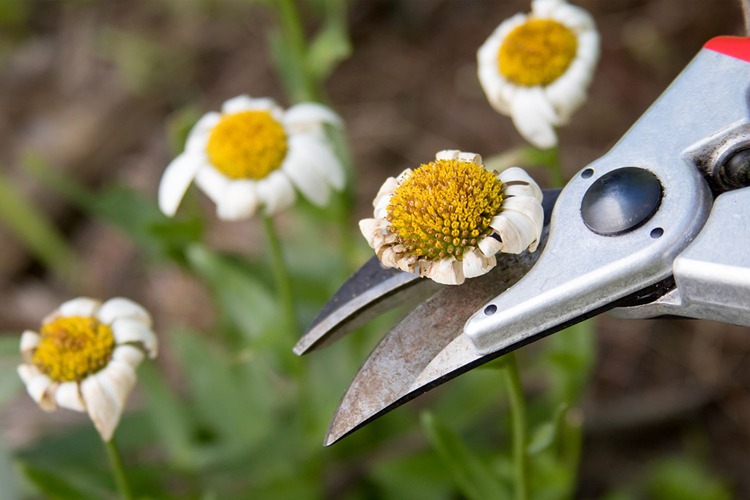
How to Propagate
Propagating this plant through seed, cuttings, or division is a relatively straightforward process. Both cuttings and division techniques contribute to the longevity of the plant. The ideal time for taking cuttings and dividing bidens is during the spring season.
Here’s how to propagate by cuttings:
- To propagate bidens, prepare sterilized scissors or pruning snips for the task. Select an actively growing stem measuring 3 to 4 inches, ensuring it possesses at least one node. Retain a couple of larger leaves while removing smaller plant growth, flowers, or buds.
- Prepare a container with moist potting soil, and if desired, have rooting hormone available.
- Dip the cut end of the stem into rooting hormone and plant it approximately two inches deep into the soil. Maintain moisture in the soil.
- Within a span of three to six weeks, new growth should begin to emerge.
To divide a Bidens plant:
- To transplant the bidens plant, gather a shovel to carefully dig around and beneath the root ball.
- Utilize a saw or the edge of the shovel to divide the root ball into halves, thirds, or quarters, taking into account the size of the current plant and the desired size for transplantation.
- Replant the divided sections either in the ground or in containers filled with moistened potting soil. Choose a location that receives full sun for optimal growth.
How to Grown From Seed
To propagate bidens through seed, sow the seeds either at the conclusion of winter or at the onset of spring. If opting for direct sowing outdoors it is advisable to wait until after the final frost when temperatures have risen to at least the 60s (Fahrenheit).
- For seed propagation, scatter the Bidens seeds on the soil surface and gently press them into the soil without burying them. Ensure that the soil remains consistently moist.
- Position the seed tray in a sunny area where the temperature is maintained at a minimum of 65 degrees Fahrenheit.
- Germination typically occurs within a period of 7 to 20 days.
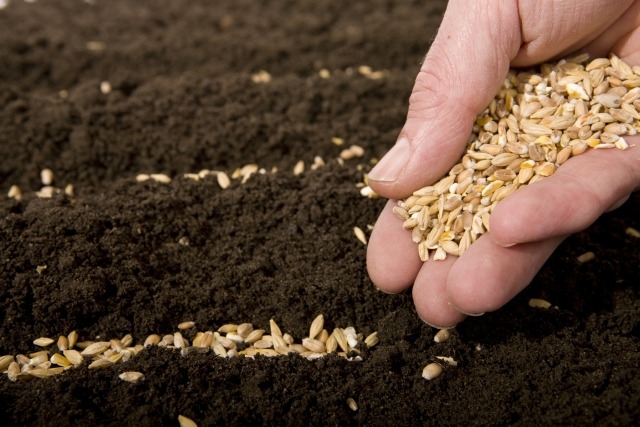
Potting and Repotting Bidens
Bidens are well-suited for container gardening. Over time, as bidens age, they may lose their vitality and vibrancy, indicating the need for division or repotting if they have outgrown their current container. Signs of being rootbound include water pooling at the soil’s surface without proper drainage or roots emerging from the drainage holes.
To address this, obtain another pot of the same size, divide the root ball in half, and replant each portion in separate pots filled with moistened soil. Dividing and repotting the plant every two to three years may be necessary to ensure its continued growth and health.
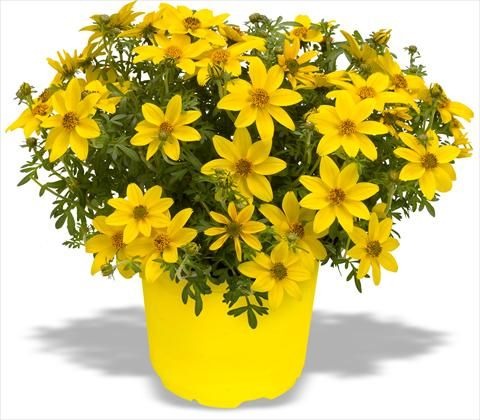
Overwintering
If the temperature falls below 40 degrees Fahrenheit, bidens plants will not survive the winter. In regions prone to frost, bidens behave as annuals and will need to be replanted during the spring season.
However, in zones 8-11, bidens can thrive as perennials. Although the blooms will fade during late fall and winter, the foliage retains its vibrant green color throughout the year. The flowers are expected to reappear in the following spring. Applying a 2-inch layer of mulch can provide additional protection and help maintain their robustness.
Common Pests and Plant Diseases
Bidens plants can occasionally encounter problems with whiteflies, but this can be addressed by applying earthworm castings as a spray around the plant’s base. Common diseases such as Botrytis and pythium can also affect bidens. In such cases, a broad-spectrum fungicide is often recommended as an effective treatment.
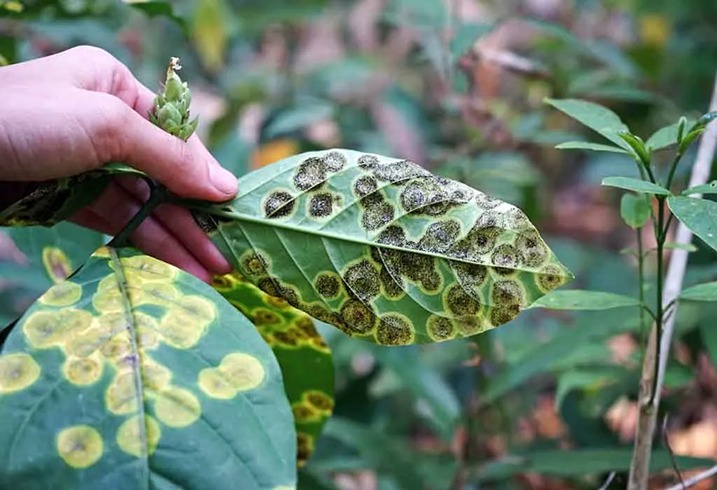
How to Get Bloom
Bidens are naturally abundant bloomers, and maintaining their flowering requires no special efforts. In regions where winters remain above freezing, it is normal for bidens to cease blooming during the fall and winter seasons while retaining their lush green foliage. Once the weather warms up, they will resume blooming.
Deadheading bidens is not necessary to encourage more blooms. However, providing them with nutrient-rich soil, ample water, and regular application of a rich fertilizer will support optimal growth and flowering.
- The blooming period of bidens typically spans from May to October.
- The individual blooms of bidens usually endure for approximately two to three weeks. However, bidens exhibit a continuous blooming cycle and will rebloom annually in zones 8-11.
- Bees are particularly attracted to bidens due to their slightly sweet scent and the availability of nectar and pollen. These plants bear a resemblance to daisies, featuring delicate, star-shaped flower heads with petalled structures.
- Bidens is a naturally prolific bloomer that reblooms as soon as its old flowers fade away. While it doesn’t require specific encouragement, pruning can promote bushier growth, potentially resulting in a greater number of flowers. Regular monthly fertilization ensures vigorous flower production in this plant. Additionally, it is essential to provide bidens with full sun exposure to maximize its blooming potential.
Common Problems
Cultivating nearly all varieties of bidens is a relatively simple task. However, it is important to note that bidens plants will naturally perish during the winter if exposed to freezing temperatures.
